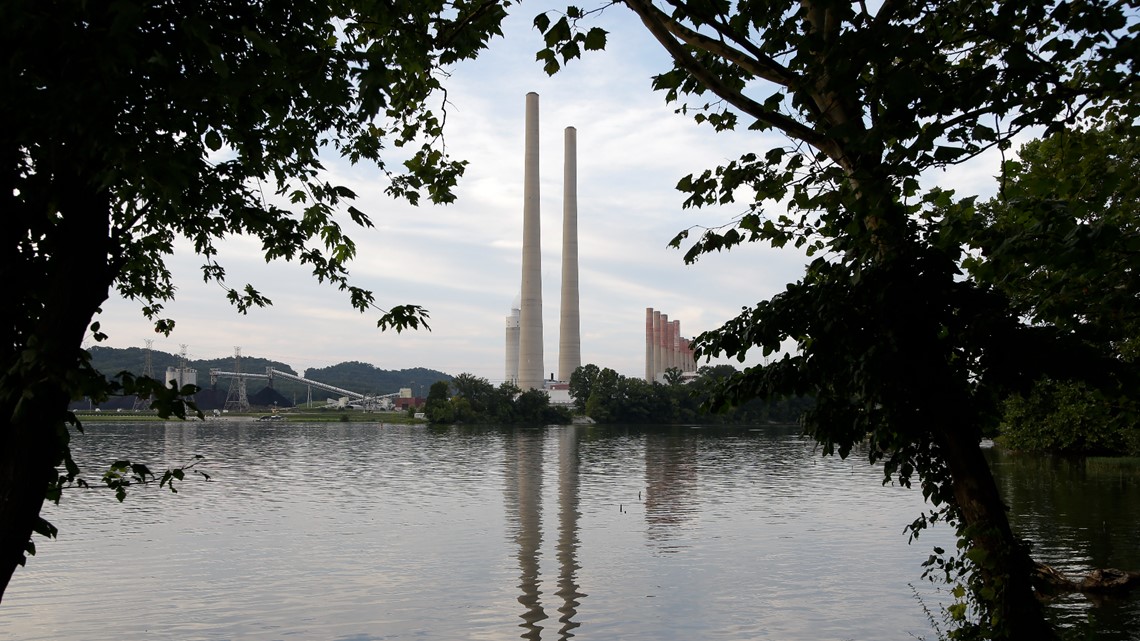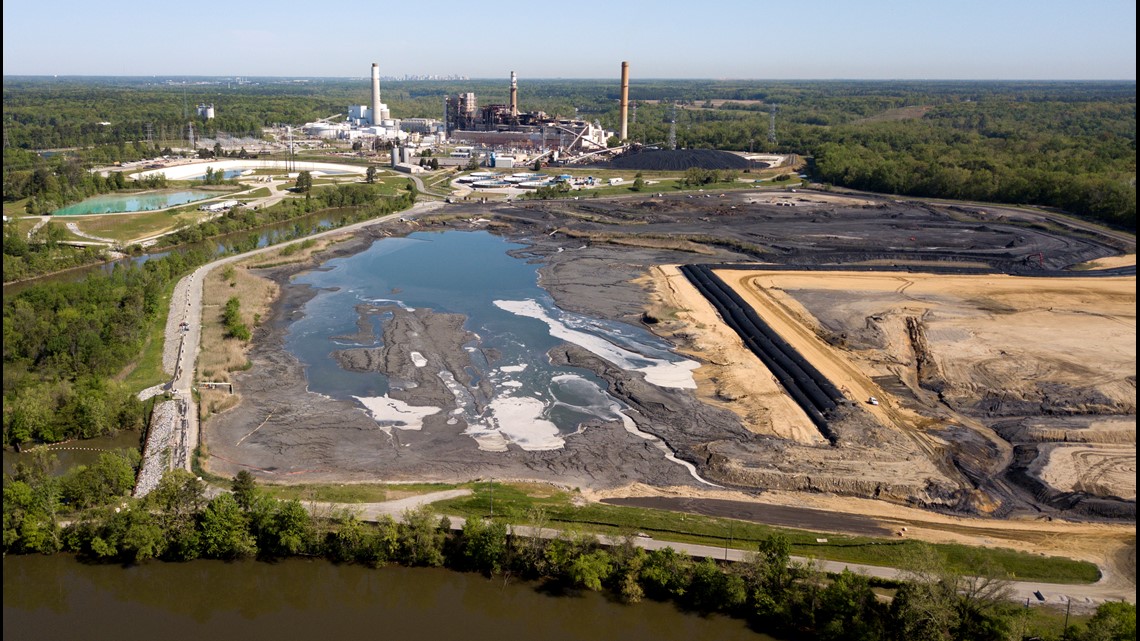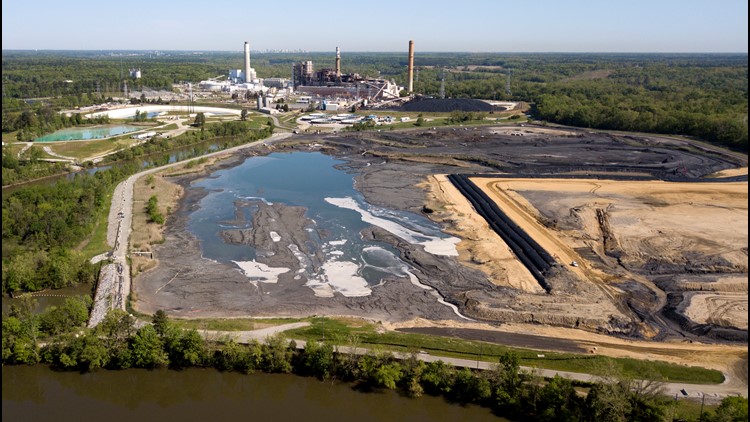INDIANAPOLIS — The U.S. Environmental Protection Agency announced Tuesday it will begin taking its first major steps to address toxic wastewater generated as a result of coal-burning power plants.
The agency ruled in part that companies must stop dumping coal ash into unlined storage ponds, and have to speed up plans to close leaking coal ash ponds.
Indiana has the largest number of coal ash ponds in the country per capita. The recent EPA ruling means some plants in Indiana will have to close these ponds months, or sometimes years, ahead of schedule.
Indra Frank is the Environmental Health Director for the Hoosier Environmental Council (HEC), and said the EPA's clarification means the state's waterways could see less contamination from these sites.
"The two most important things we got from the EPA today are which of our coal ash disposal sites fall under the federal rule; and the fact that, under the federal rule, they're not allowed to leave coal ash in contact with the groundwater. So, the net result is we're going to see better protection of Indiana's water resources," Frank told 13News.


Coal ash waste is a toxic byproduct of burning coal to generate electricity. It contains toxic heavy metals that can pollute waterways, poison wildlife and cause respiratory illness in people living near storage ponds.
In 2020, Indiana ranked third in the nation for total coal consumption and coal consumption for electricity generation. Coal also provides fuel for more than 53% percent of Indiana's electricity net generation that year.
The state's heavy reliance on coal means it is home to more than 80 of these toxic coal ash pits. Those can leak toxins — mercury, cadmium, arsenic — into the surrounding groundwater and poison nearby drinking supplies. Of the 100 million tons of annual ash or other waste produced by coal plants around the country, 5 million of that is generated in Indiana.
Most of Indiana's coal pits are located in flood plains, so the waste is disposed along Lake Michigan, or state rivers like the Wabash or White rivers.
The pits are often unlined, so carcinogenic toxins can penetrate and poison groundwater easier.
"When we leave these large deposits of waste sitting in the floodplain, that means the future flooding events could create a major spill. So, the floodplain really is one of the worst locations for having disposal of waste," Frank said.
While other states have made moves to transport their coal ash into above-ground waste centers, where it cannot penetrate groundwater as easily, no moves have made headway in Indiana despite the large number of these sites.
"Unfortunately, Indiana has been behind on handling coal ash disposal. We've seen North Carolina, South Carolina, Virginia, Illinois, Tennessee, and Georgia move ahead with getting coal ash out of the flood plain and out of these unlined pits where it is. Indiana really hasn't moved ahead with that yet," Frank said.
In 2015, the Obama administration became the first to regulate the storage and disposal of coal ash at a federal level. Those rules were then weakened by Trump's administration in 2020, and then not enforced.
In Indiana, state regulators had the ability to break up what could have been one large coal ash pit into several ponds, thereby disqualifying the site from federal regulation.
The HEC said several Indiana utilities and the Indiana Department of Environmental Management had been interpreting the 2015 rule in a way that was allowing millions of tons of coal ash at multiple sites around the state to remain in direct contact with groundwater despite knowing that it was being contaminated by dumped coal ash.


"We've had some misinterpretations of [the 2015] rule, so some of the towns in Indiana have been judged as not falling under the federal rule. Today, the EPA made clear which of the coal ash impoundments fall under the rule and which don't. And that means we're going to see better clean up for Indiana," Frank said.
The recent EPA ruling clarified that coal ash leaking at a site anywhere in the country is prohibited, regardless of whether or not that site is a federally monitored coal ash pit.
The EPA also clarified the federal rule's requirements for properly disposing of coal ash, testing groundwater near coal ash disposal sites, and cleaning up groundwater contamination from unlined impoundments and landfills.
EPA Administrator Michael Regan said the move further ensures coal ash ponds meet environmental and safety standards.
"I've seen firsthand how coal ash contamination can hurt people and communities. Coal ash surface impoundments and landfills must operate and close in a manner that protects public health and the environment," Regan said. "For too long, communities already disproportionately impacted by high levels of pollution have been burdened by improper coal ash disposal."
The EPA provided guidance that applied to coal ash disposal across the country, but it named two Indiana sites specifically: Clifty Creek Generation Station in Madison and Gallager Generating Station in New Albany.
They already denied requests for extensions of coal ash permits in plants throughout Ohio, Iowa, New York and Kentucky.
The EPA said a total of 57 facilities covered by the regulations have requested deadline extensions.
Despite the ruling on Tuesday, environmental groups will continue monitoring the Statehouse.
"There's a group of bipartisan legislators who are introducing bills at the Statehouse about coal ash disposal and that those will help ensure that coal ash disposal remains safe in Indiana, even if there are changes in administration in Washington, D.C., and changes in how rules are handled at the federal level," Frank said.



